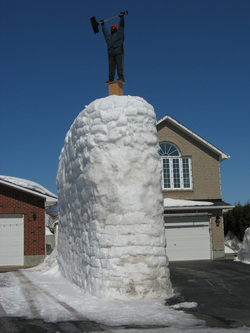 Why is this important? If you own a home or rental property, it is important to understand the potential risks associated with snow and ice removal. Is it safer to not shovel? There is a common assertion among property owners that not shoveling your sidewalk or property carries less liability than removing the snow and ice. This, like most overly general statements, is not true. The concept stems from a misunderstanding about liability and the risks associated with owning property. While it is true, if you decide (or have a contractual duty) to shovel, you must do so in a reasonable manner that does not create additional risk. But it seems hard to imagine how removing snow and putting down salt could create more risk. When can you be liable for injury? The build-up of snow and ice is categorized as a natural phenomenon. If a person is injured because of a natural phenomenon, the law requires, at the very least, some evidence of an intervening act by the property owner that aggravates a hazardous presence of ice or snow. An intervening act would likely result from a property owner’s action or inaction prior to the accumulation of snow; such as leaving a garbage can lid on the sidewalk or not repairing a damaged gutter which produces an excessively dangerous accumulation of ice. Courts have also held that an owner or occupier of land owes no duty to warn invitees of open and obvious danger. To be open and obvious, a hazard must not be concealed and must be discoverable by ordinary inspection. If the danger were covered by snow would it be open and obvious? Removing snow and ice allows you (or your snow removal company) to uncover what may otherwise be hidden and hazardous conditions. By uncovering hidden dangers you are either removing them from being a danger or making them open and obvious. Conclusion Unless your shoveling skills are so bad that you create hidden dangers, it is best to shovel. Without shoveling, potential dangers will remain hidden. |
Elliott Stapleton Attorney with CMRS Law
|
 RSS Feed
RSS Feed